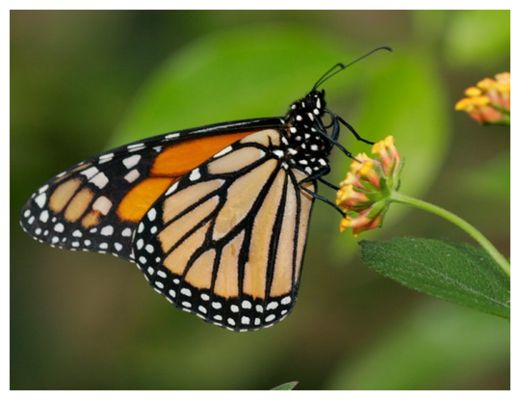
© Purestock/ThinkstockVanishing act. The number of monarchs wintering in Mexico has plummeted.
Mexico City - In winter, central Mexico's highland forests should be pulsing with orange and black. Not this year. Monarch butterfly colonies now cover less than a single hectare of forest, the smallest swath of land since data collection began in 1993, scientists reported at a press conference here today. The paltry figure highlights the uncertain fate of a natural wonder: the monarch's 4000-kilometer migration between North and Central America.
Each autumn, monarchs fly from their breeding grounds in the United States and Canada to Mexico, clustering by the thousands in pine and oyamel fir trees in Michoacán and Mexico states. Scientists had been bracing for bad news about this year's colonies since last spring, when few monarchs were tallied returning to their northern breeding grounds. A cold spring also pushed back the 2013 migration, interfering with the timing of monarch breeding, says Chip Taylor, an ecologist at the University of Kansas, Lawrence, and the director of Monarch Watch, which monitors U.S. populations.
The figure announced today - 0.67 hectares - means that the population wintering in Mexico is down nearly 44% from last year's previous record low of 1.19 hectares. Monarch experts lay much of the blame on the decline of milkweed plants in North America. Adult monarchs lay their eggs on milkweeds, which the caterpillars consume before spinning their cocoons. Milkweed - and the monarchs that depend on it - once sprang up widely between rows of corn or soybeans in the U.S. Midwest. But with more and more farmers planting herbicide-resistant versions of these two crops, they are able to spray their fields with powerful herbicides, killing off milkweed.
"We've lost about 100 million acres of monarch habitat in corn and soybean fields" since 2000, with millions more acres lost to development in the Midwest, Taylor says. "We're replacing what used to be good monarch habitat with crops and lawns," adds Karen Oberhauser, a conservation biologist at the University of Minnesota, Twin Cities.
For many years, illegal logging in Mexico was the main threat to the monarch migration. Facing harsh criticism from environmentalists on both sides of the border, the Mexican government beginning in 2007 stepped up its enforcement efforts by deploying troops to protect winter habitat and expanding programs to provide economic alternatives to nearby communities. After peaking in 2007, large-scale illegal logging in the region now appears to have ceased, says Omar Vidal, director general of WWF Mexico, which administers the winter colony count. "The Mexican government and the Mexican people have done what needed to be done [to protect the butterflies], at great cost. But all those things aren't going to ensure the survival of the migration," he says.
Vidal and others say it's the U.S. government's turn to take action. Mexico must "energetically demand" that the United States reform its agricultural policy with an eye toward preserving milkweed, Vidal says. In the meantime, watching fewer and fewer monarchs arrive in Mexico each winter "is like water escaping from our hands without a way to stop it," says Alfonso Alonso, a conservation biologist at the Smithsonian Institution in Washington, D.C., who studied the monarchs as a graduate student in Mexico.
Some scientists suspect that misguided attempts to help the monarch in the United States may be accelerating the end of the migration. U.S. scientists have been encouraging midwesterners and Texans to plant milkweed, but many people have been planting the wrong variety:
Asclepias curassavica, a species that usually grows in the tropics. Tropical milkweed does not die back in the winter, providing monarchs with a year-round food source that may eliminate their need to migrate, Oberhauser says.
Staying in one place for many generations makes the butterflies more susceptible to the deadly
Ophryocystis elektroscirrha parasite. According to Lincoln Brower, a biologist at Sweet Briar College in Virginia, the "insidious disease" spreads when infected butterflies scatter spores on milkweed plants, which are then ingested by the next generation of caterpillars. If fewer butterflies migrate to Mexico, he says, the proportion of infected monarchs across North America may increase, imperiling the whole population.
Although the monarch lives all over the world and is not at risk of extinction, an end to the North American migration would likely endanger central Mexico's pine and oyamel fir forests. The butterfly provides an economic incentive to protect the unique alpine ecosystem, Alonso says. If the migration stops, "people are not going to benefit from the tourism and the forest is not going to be protected."
The monarch may also be the first sign that food webs in the U.S. Midwest are being irrevocably disrupted as a side effect of widespread planting of herbicide-tolerant crops, Brower says. Monarchs, he says, are "the canary in the cornfield."
Reader Comments
to our Newsletter